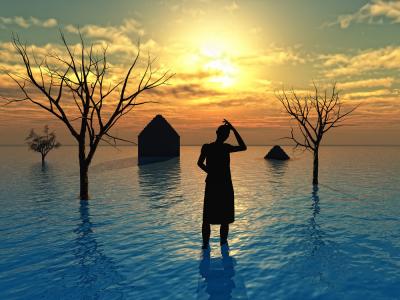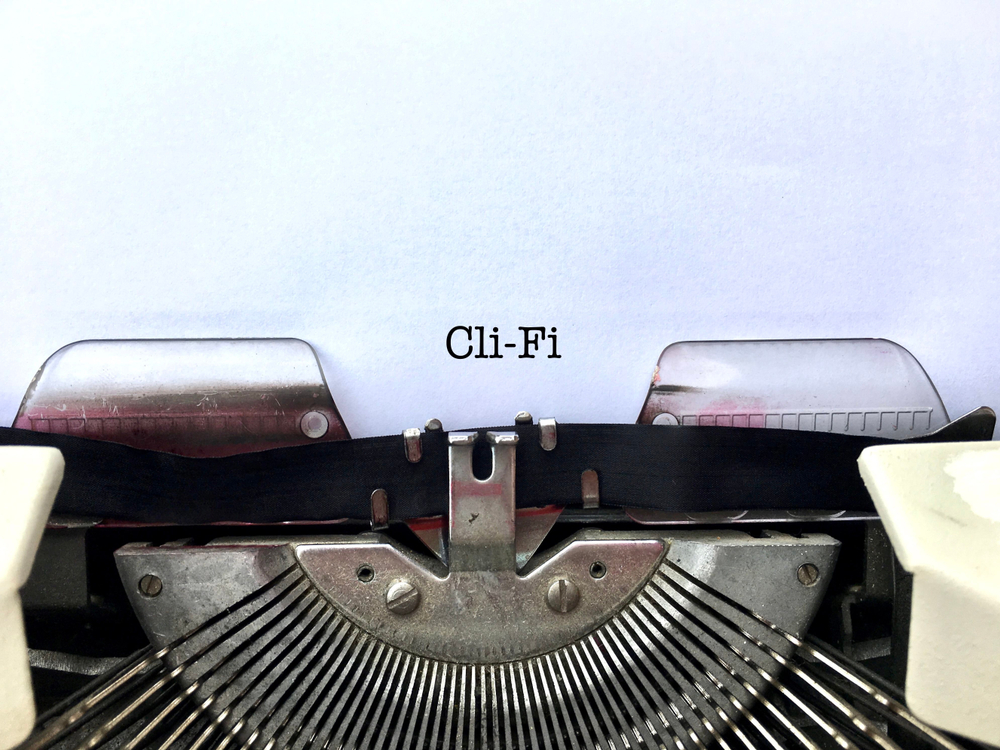When I began working on my novel Weather Woman back in 2013, I had no idea I was writing Climate Fiction, now commonly referred to as Cli-fi. I’d never heard of Cli-fi before—most people hadn’t—I was simply exploring a What-if premise that interested me. What if a woman were to discover she could change the weather? It was a whimsical beginning to a novel which quickly led me to philosophical questions about the nature of belief, science and intuition, as well as to questions about what it would take to address our climate crisis. When the book was published in 2018, it was clear I had written a book that fit squarely into the category of Cli-fi, literature that addresses climate change or global warming.
In the two years since that novel was published, as I prepare for the publication of its sequel, Sinking Islands, I’ve done a lot of thinking and reading about Cli-fi, its role in the literary world and its role in the world at large.
Jules Verne wrote about climate catastrophes back in the 1880s (The Purchase of the North Pole and Paris in the Twentieth Century), as did J.G. Ballard in the 1960s (The Wind from Nowhere, The Drowned World, the Burning World), but it wasn’t until the early 2000s that climate fiction began to populate the landscape of literary fiction widely enough to make it into a genre of its own. Dan Bloom, an American ex-pat living in Taiwan, is often given credit for coining the term Cli-fi. He denies having coined it, but he has definitely spread the word in his widely-read blog “The Cli-fi Report.”
British nature writer Robert Macfarlane asked in 2005: “Where are the novels, the plays, the poems, the songs, the libretti of this massive contemporary anxiety?” His call has been heeded in spades; in fact, when he posed that question the work was already well underway. By 2015 numerous literary novelists had weighed in with novels of Cli-fi. Margaret Atwood arrived at the table early with her 2003 novel Oryx and Crake, the first of a trilogy. Countless other writers followed, including (in no particular order): Barbara Kingsolver, Claire Vaye Watkins, Cormac McCarthy, Karen Russell, Jeff VanderMeer, T.C. Boyle, Richard Powers, Lydia Millet, Jenny Offill, Nathaniel Rich, Omar El Akkad, Ling Ma, etc. I could go on at much greater length because climate fiction abounds these days. While many of these novels are set in futuristic dystopian or post-apocalyptic worlds, others are examinations of how climate change is playing out in our current lives.
Why are writers, including myself, drawn to writing about climate issues? To some degree it’s because we are all deeply worried about the fate of the Earth. But no novelist I know wants to write a polemical novel, and many excellent nonfiction books have done the work of purveying information and warnings. Bill McKibben has been writing superb books of climate alarm since the 1980s (The End of Nature and Falter, to name a few). More recently authors like Jeff Godell and David Wallace-Wells have written riveting and highly-informative works of nonfiction, notably The Water Will Come (Godell) and The Uninhabitable Earth (Wells). Fiction offers the reader something different. It draws its strength from depicting individual lives and the complicated emotions entwined in those lives. Novelists can show what is at stake in a personal way: the difficult decisions we are having to make, the variety of losses we are facing. We write, I think, not only to inform and warn—some of that, yes—but also to pose questions and stimulate the problem-solving imagination. We do not necessarily think our work is going to catalyze action, but we hope it will move the climate crisis squarely to the center of our cultural conversation.
In 2018 when Weather Woman was dubbed a work of Cli-fi by various reviewers, I initially resisted the term—I feared the label might sideline the novel as genre fiction. Now I embrace the term with zeal. The climate crisis is the central existential issue of our time and, because of this, it seems impossible to write an authentic contemporary novel without acknowledging it as a central force in our characters’ lives. Climate change may not figure in the story’s foreground, but it always looms as a background element, an important part of the zeitgeist. In a world in which every day brings more extremity—more intense cyclones, hurricanes, tornados; polar vortices, melting ice sheets, rising seas, and massive flooding; more severe droughts resulting in mega-fires, crop failures, and mass migrations; widespread degradation of air and water quality, along with the loss of innumerable animal and plant species—climate change is impossible for any observant person to ignore. It is not, therefore, surprising that Cli-fi has moved into the mainstream of the literary landscape. I can confidently say it is here to stay.


Add Comment